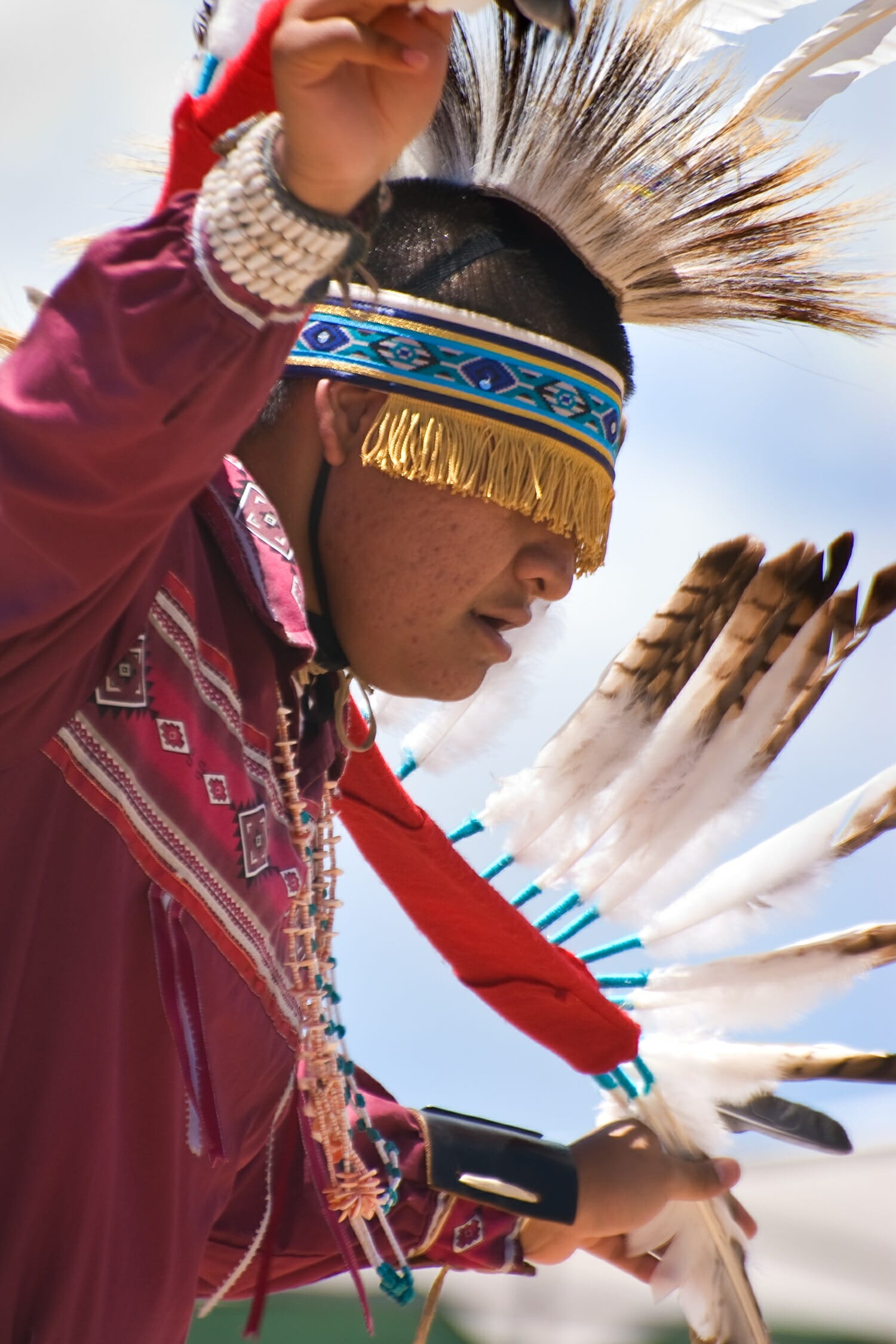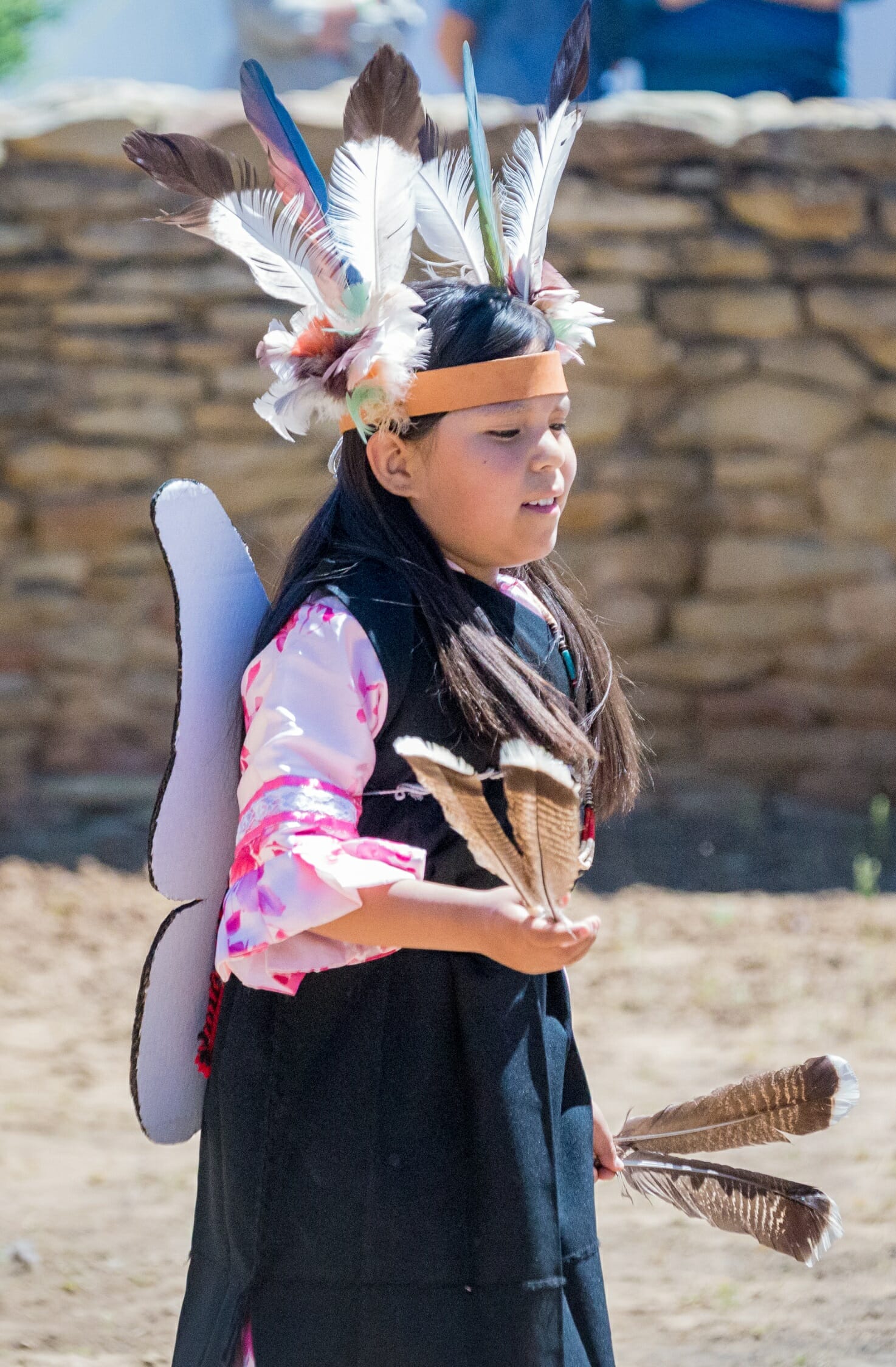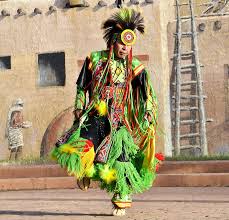DANCES OF THE ANCIENTS ON MAY 26TH
On May 26, Native American dancers will gather at Chimney Rock to dance in the beautiful area adjacent to the Visitor Cabin, surrounded by Ponderosa Pines of the San Juan National Forest. The Oak Canyon Dancers will perform at 10:00 AM and Norman and Ramona Roach will perform at 1:00 PM, one day only. Many Southwest tribes feel a connection to Chimney Rock, and this event will be both powerful and captivating.
Guests should plan to stand for the performance, or bring their own camp chairs or blankets. Each performance will include the same dancers; duration of the programs may vary depending on the specific dances presented. This program does not take place near the archaeological sites; regularly-scheduled walking tours of the archaeological sites will be available for an additional $5/adults and $2.50/child.
Tickets are $15.00 ($5.00 for children ages 5-12) plus booking fee, and are non-refundable. In the event of cancellation due to inclement weather, rain checks will be available. For details, please call the Visitor Cabin (970-833-5359) 9:00 – 4:00 Mountain Time.
Reservations strongly recommended. Limited space. Walk-ins on a first-come, first-serve basis.


Oak Canyon Dancers
The Oak Canyon Dance group was started by Julian Fragua and his brother Odell Fragua. The brothers were inspired by their experiences with their grandfather and his cousin, dancing at various places when they were young. The Oak Canyon Dancers are a family dance group that consists mostly of Julian and Odell’s children and immediate family. The name, Oak Canyon, is their clan name in the pueblo, which is passed down from the mother’s side. All of the dances are performed by the children, ages 9 to 14, and are accompanied by live native singing and a pueblo drum. Some of the dances that the Oak Canyon Dancers perform are the eagle dance, the shield dance, the buffalo dance, the butterfly dance and the plains native traditional dance. The eagle dance honors the eagle for being a huge part of their culture. This dance symbolizes the blessings of their people giving them strength, courage and spiritual healing. The shield dance symbolizes the warrior and the brave men in their tribe who protected their people. The shield dance honors these strong, courageous men and also the brave men and women who serve our country and protect our nation. The buffalo dance symbolizes their honor of the great Bison which gave them large amounts of meat for nourishment, hide for clothing, shelter, blankets, drums, and bones for tools that were needed for daily living. The butterfly dance symbolizes the growing and entering into summer, and the plains native traditional dance, which comes from the plains native culture, is a dance for completion and is an intertribal dance at pow-wows.
Norman and Ramona Roach
Norman and Ramona Roach are traditional Powwow style dancers and school teachers. They have been dancing and performing for audiences for many years now, and they have also traveled the world with the American Indian Dance Theatre. Norman is from the Lakota/Sioux tribe and his native name is Chase Alone. His wife Ramona is from the Dine’/Navajo tribe. Norman dances and also plays the native flute; some songs he has composed himself and some are considered traditional. One dance is called the plains-style Grass Dance. The regalia that he wears during this dance represents the life giving grasses that fed the buffalo that the plains tribes depended on. Norman also performs the native Hoop Dance that was originally done with one hoop. It is now a difficult, energetic and complicated dance. Norman is proud of his ancestry and likes to promote the positive history of the Native Americans. His paternal grandmother, and maternal grandfather, were both orphaned at the Battle of the Little Big Horn when they were toddlers. His mother was a well-known powwow dancer and she is credited with being the first Native American to do continuous spins when she did the powwow Fancy-Shawl dance.
Ramona dances and performs all three powwow style female dances. She also sings traditional Navajo songs and tells the history behind them. When she performs the Ladies Traditional Dance she wears a fully-beaded traditional top that weighs about 30 lbs. For the Jingle Dress Dance she wears a dress that has tiny metal cones sewn on it. This dance was originally a sacred healing dance of the Ojibwa people and it evolved from a vision dream that a grandfather had when he was very ill. Ramona also performs the powwow style Fancy-Shawl Dance, which was very controversial when it was first done by a few brave ladies from the Northern Plains during the early 1960’s. It is an energetic freestyle dance that is now a very popular dance done by females in the powwow arena.
Powwow dances and songs collectively, are not considered sacred ceremonies by native people. Although many native dances have evolved and some continue to change, some dances are considered traditional and change is not encouraged. More importantly, many native dances and songs, both sacred and social, have remained the same throughout the ages.



